The release of the most recent report by the United Nations Intergovernmental Panel on Climate Change (IPCC) was met with widespread international alarm. The BBC wrote that this was “code red for humanity” and the New York Times warned, “A Hotter Future Is Certain.” A Guardian headline stated that major changes to the climate were “inevitable” and “irreversible,” while both the BBC and the Guardian seemingly celebrated a survey that showed 4 in 10 young people now have almost uncontrollable anxiety about the climate.
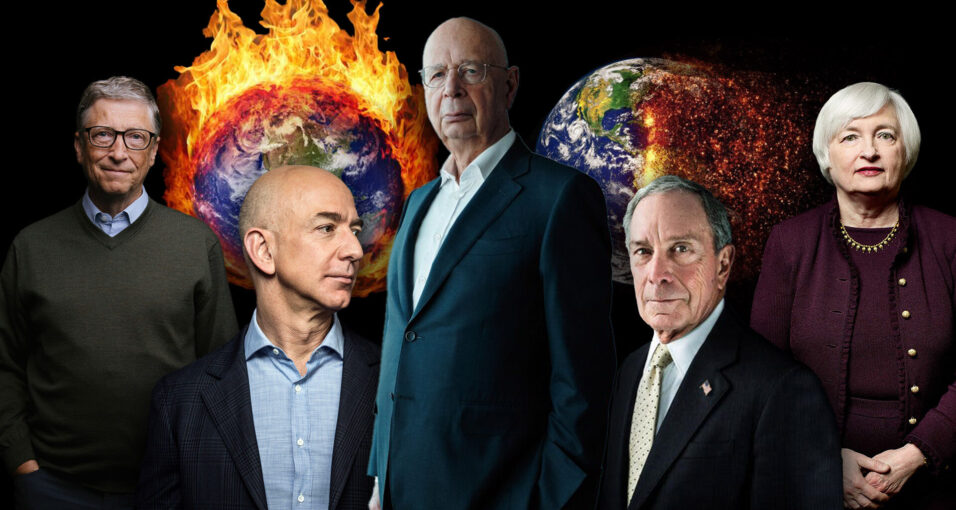
According to the survey, nearly half of 16-25-year-olds around the world are hesitant to have children as a result of what they believe is a climate crisis and feel that governments are doing too little to prevent it.
In come the bankers with the help of the UN and world governments to finally save the day. The first step is: Find a way to purchase, own, and monetize the land we need to conserve.
In October, journalist Whitney Webb reported on one of the plans launched by a new group called the ‘Intrinsic Exchange Group‘ (IEG) that promises to save us from this catastrophe once and for all. According to the IEG, with the help of multinational corporations, billionaires, and other investors, the UN and IEG will rescue the planet from certain extermination.
After all, the UN conceded once that ‘the businesses of the world is now the business of the UN.
From the report:
In September, the New York Stock Exchange (NYSE) announced it had developed a new asset class and listing vehicle aimed at “preserving and restoring the natural assets that ultimately underlie the ability for there to be life on Earth.” The vehicle, known as a natural asset company, or NAC, will enable the formation of specialized firms “that own the rights to the ecosystem services produced on a certain piece of land, such as carbon sequestration or clean water.” The natural assets that these NACs commodify will subsequently be maintained, managed, and grown by them.
In the US, Summit Carbon Solutions recently began work on obtaining land in North Iowa for its proposed Midwest Carbon Express pipeline.
Summit Carbon Solutions, an offshoot of Summit Agriculture Group, is behind the $4.5 billion Midwest Carbon Express project. It would be the largest carbon capture project in the world with the goal of sending 12 million tons of CO2 annually to western North Dakota, where it can be stored underground.
Landowners expressed concerns regarding Summit Carbon’s use of eminent domain, which allows the company to build the pipeline on land without consent from the landowner.
Eminent domain is when a government body can acquire private property for public use, with compensation for affected landowners.
While shady deals like these have been happening in the US for decades, these new corporations — soon to be traded on the stock market casino — aren’t going to be largely focused on land looted in the US.
Allegedly, NACs will use the funds from these newly obtained and monetized natural assets to help fight climate change by ‘preserving’ the rain forests, mountains, and lakes mostly abroad. They also vow to change the “conventional agricultural production practices” of farms to make them more efficient and sustainable.
But, the creators of NACs concede the ultimate goal is to extract trillions in profits from natural processes such as photosynthesis, apply intrinsic values to natural processes, and then monetize it.
“Our hope is that owning a natural asset company is going to be a way that an increasingly broad range of investors have the ability to invest in something that’s intrinsically valuable, but, up to this point, was really excluded from the financial markets,” said NYSE COO Michael Blaugrund upon the launch of the NAC idea.
On their website the Intrinsic Exchange Group states that they are “using Intrinsic value as the umbrella for values not yet identified or quantified, as well as values such as cultural, social, aesthetic, spiritual, etc.”
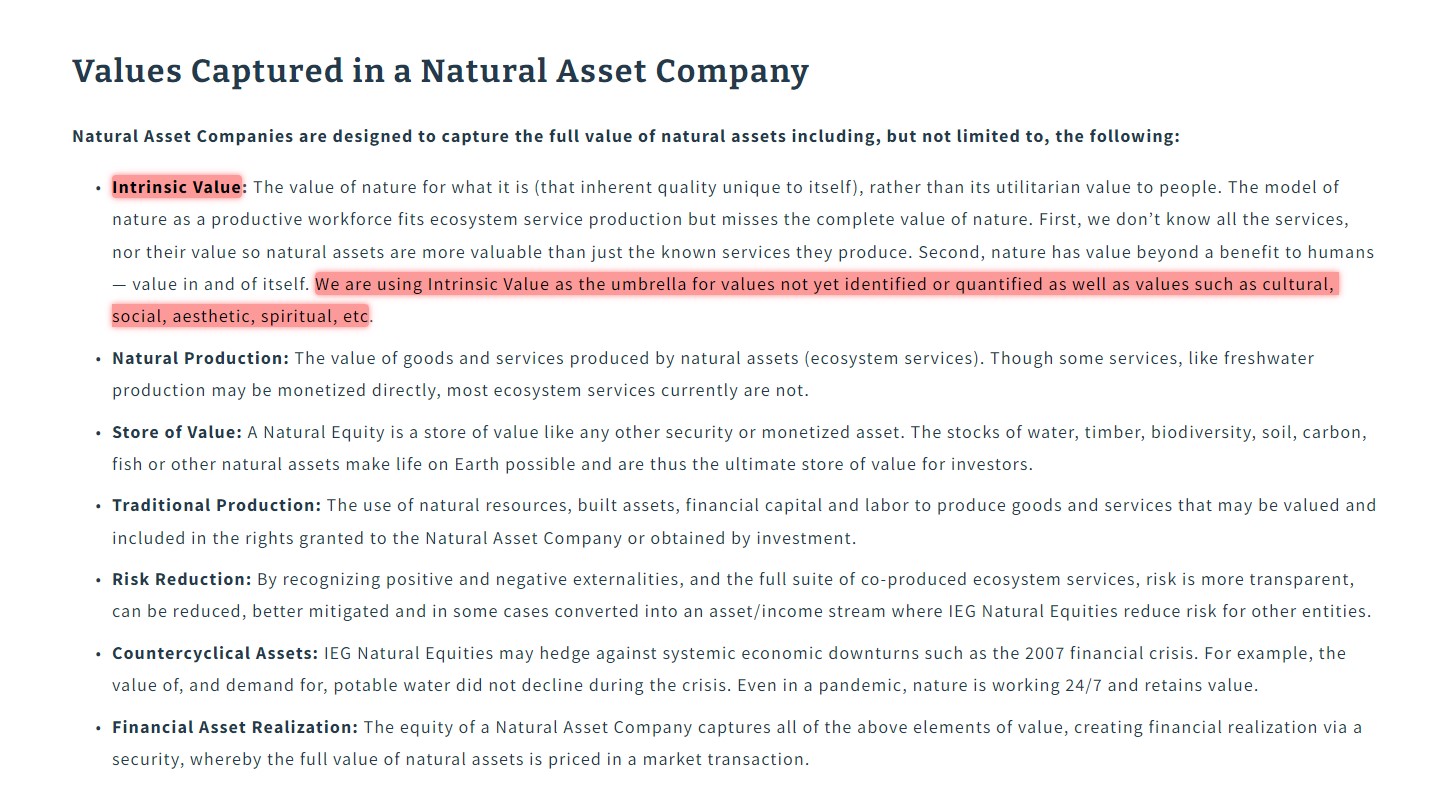
Following the launch, Fortune Magazine noted that NACs allow for a ‘new form of sustainable investment’ which has caught the ears of BlackRock CEO Larry Fink along with countless other infamous investors.
…”In return, investors will get access to a new form of sustainable investment—a space that has enthralled the likes of BlackRock CEO Larry Fink…” Fortune Magazine wrote.
In 2019, the IEG teamed up with NYSE — which itself holds a minority stake — to launch the idea of NACs. The top three investors in the IEG are the Rockefeller Foundation, Aberdare Ventures, a venture capital firm founded by Paul Klingenstein focused mainly on digital healthcare, and the Inter-American Development Bank, which is the largest source of development financing for Latin America.
According to Webb, the Inter-American Development Bank and the Rockefeller Foundation both have been tied to pushes for Central Bank Digital Currencies (CBDCs) and biometric Digital IDs.
Climate Alarmism: A Land Grab Manufactured and Funded by the Bankers, for the Bankers
IEG is currently working with the Costa Rican government to guide a ‘pilot program’ of the efforts in Costa Rica. Andrea Meza Murillo, Costa Rican Minister of Environment and Energy, argued that the pilot project with IEG “deepens the economic analysis of the economic value of nature and continues to mobilize the flow of funds for nature maintenance.”
According to the IEG, the plan is to pioneer “a new asset class based on natural assets, and the mechanism to convert them to financial capital.” The new ‘assets’ according to the group are all of which make “life on Earth possible and enjoyable, and include biological systems that provide clean air, water, foods, and medicines.”
Put simply, entire ecosystems and the benefits people receive from them, will become financial assets. Assets will include food production, tourism, clean water, biodiversity, pollination, and even carbon sequestration. The assets will then be owned by corporations, and stocks in these assets will be sold on Wallstreet.
As IEG notes, the NAC is just the issuer of the natural asset, while the assets the NAC represents can be purchased by investors like BlackRock. Those investors include institutional investors, private investors, individuals and institutions, corporations, sovereign wealth funds, and multilateral development banks.
All of this is only possible if the ownership of the land is transferred into the hands of the banks.
From the IEG Website:

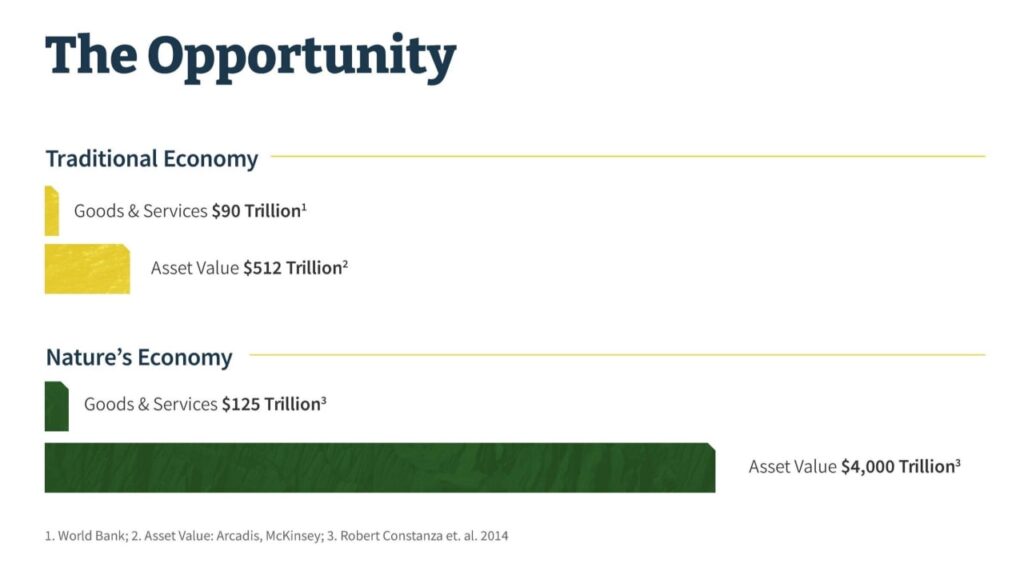
Webb recently reported that in early November an “industry-led and UN-convened” alliance of private banking and financial institutions announced their plans at the COP26 conference. The group is called the Glasgow Financial Alliance for Net Zero (GFANZ) and the goal is to overhaul the role of global and regional financial institutions, including the World Bank and IMF, as part of a broader plan to “transform” the global financial system.
According to the group’s own progress report, the group aims to merge these institutions with the private-banking interests that compose the alliance and create a new system of “global financial governance.”
To obtain the land necessary for the NAC, developing nations would be forced to establish business environments beneficial to the alliance members and open up land. This can be accomplished in several ways including debt-for-nature swaps. This process is where a creditor country forgives a portion of the public bilateral debt of a debtor nation in exchange for environmental commitments from that country.
The degree of debt-for-nature swaps groups like these have engaged in have been well documented in Argentina, specifically Patagonia, for decades. What occurred in Argentina and Chile however would pale in comparison to the level of swaps this plan would entail.
At the Climate Leaders Summit in April 2021, convened by the US and attended by global policymakers, Argentina alluded to another one of these swaps. Argentina’s president Alberto Fernández pushed for an agreement with its creditor countries to reduce part of the foreign debt in exchange for increased ‘environmental and climate commitments.’
In other words, when a Latin American country owes money, they open up their land to pay the debt or the interest of the debt. This process is normally referred to as Debt-trap diplomacy or put simply, debt-entrapment.
Multilateral development banks (MDBs), such as the World Bank, leverage the debt of developing countries to force them to privatize public assets. The GFANZ report states that the Alliance is now trying to use the same controversial tactics by forcing more deregulation in developing countries to allow alliance members to invest.
In the 1990s founder of Northface clothing, Doug Tompkins, and his second wife, Kris Tompkins, who was an executive of clothing brand Patagonia, purchased more than 2 million acres of wilderness in Chile under the guise of ‘conservation efforts.’ Following Tomkins’ death, their NGO Tompkins Conservation formally donated one million acresof land back to the Chilean government.
The other way this land grab can be accomplished is by using powerful international groups like the UN to pressure developing countries to deregulate and open up their land for privatization due to the ‘urgent life-threatening’ menace of climate change.
The GFANZ alliance was launched in April by John Kerry, Janet Yellen, and former chair of the Bank of England, Mark Carney. Carney also co-chairs the alliance with Michael Bloomberg.
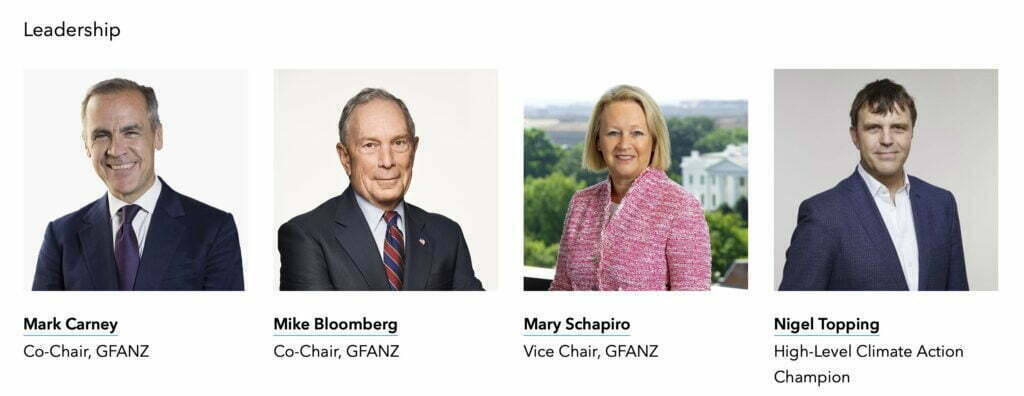
While the world focuses on Russia reportedly planning a military offensive against Ukraine, and China apparently rehearsing for an attack on Taiwan, the supranational banking elite is quietly invading the US and countries worldwide to loot their resources.
John Kerry recently noted that “the largest financial players in the world recognize energy transition represents a vast commercial opportunity.” Boris Johnson described GFANZ as being responsible for paving the way to “uniting the world’s banks and financial institutions behind the global transition to net zero.”
The principals listed on the GFANZ website include the CEOs of BlackRock, Bank of America, Citi Bank, Banco Santander, and HSBC. The CEO of the London Stock Exchange Group and Nili Gilbert, chairwoman for the David Rockefeller Fund are also listed.
In mid-November, Michael Bloomberg hosted his ‘New Economy’ forum. According to the event’s website, the group is focused primarily on climate change and COVID-19 vaccines.
“Covid-19 held a mirror to society’s biggest problems, from climate change to inequality, forcing humanity to grapple with their consequences. But there is hope. Even as the pandemic still rages, the success of groundbreaking mRNA vaccines, the acceleration of the digital economy during lockdowns, and a focus on government spending to save lives and improve livelihoods demonstrate that humankind is capable of taking on — and overcoming — great challenges. Breakthroughs are possible. In science and technology, we’ve entered a new age of discovery.”
Bloomberg’s ‘New Economy’ forum is led by Bill Gates, Henry Kissinger, and Penny Pritzker, as well as a dozen other board members with ties to multinational banks like Goldman Sachs. Former Governor of the People’s Bank of China Zhou Xiaochuan, as well as the founder of Binance, are on the board as well.
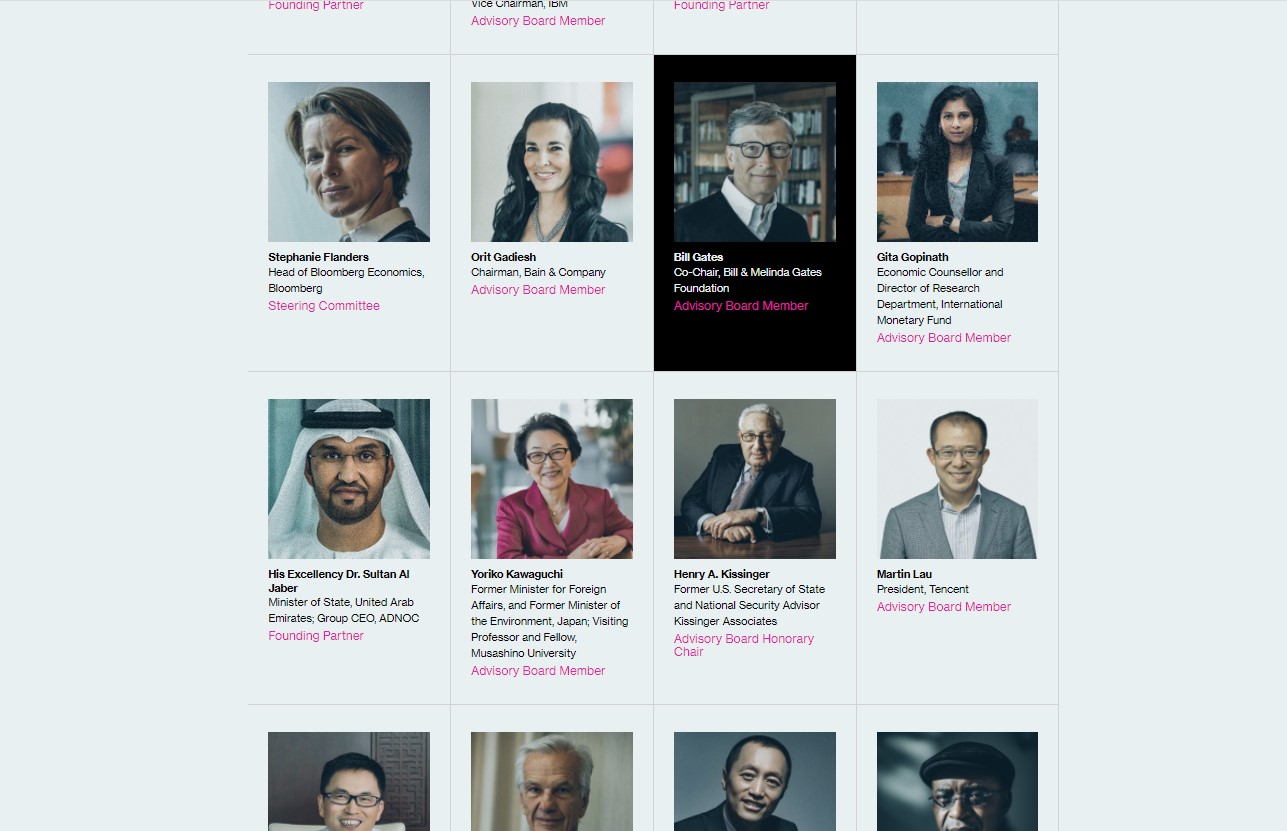
From Whitney Webb:
“As part of COP26, GFANZ— a key group at that conference—is publishing a plan aimed at scaling “private capital flows to emerging and developing economies.” Per the alliance’s press release, this plan focuses on “the development of country platforms to connect the now enormous private capital committed to net zero with country projects, scaling blended finance through MDBs [multilateral development banks] and developing high integrity, credible global carbon markets.” The press release notes that this “enormous private capital” is money that alliance members seek to invest in emerging and developing countries, estimated at over $130 trillion, and that—in order to deploy these trillions in investment—“the global financial system is being transformed” by this very alliance in coordination with the group that convened them, the United Nations.”
A “country platform” is defined by GFANZ as a mechanism for a “public-private partnership around a specific issue or geography.” In other words, a country with lucrative land they can obtain ownership of, monetize, corporatize, and sell on the New York Stock Exchange.
As documented in a recent Bloomberg article, U.S. climate envoy John Kerry says investment banks including Goldman and Morgan Stanley are ready to invest $4.16 trillion in the energy transition over the next decade. “We have to find a way to deploy that money,” he says.
“We have to start where the greatest amount of emissions are if we’re going to win the battle,” Kerry told the Bloomberg New Economy Forum. “We have to, all of us, be able to put the deals together that will phase out their coal fast.”
U.S. climate envoy @JohnKerry says investment banks including Goldman and Morgan Stanley are ready to invest $4.16 trillion in the energy transition over the next decade. “We have to find a way to deploy that money,” he says. https://t.co/Ca0gfw9CFa #NewEconomyForum pic.twitter.com/GGCeH9Qwkv
— Bloomberg (@business) November 19, 2021
According to another Bloomberg report, Jeff Bezos has given over $1 billion dollars to date. Last year, Bezos gave $791 million to 16 organizations as part of his commitment to his ‘Earth Fund to fight climate change.’ Bezos has promised to distribute the full amount by 2030.
The GFANZ report plainly states that the MDB should be used to encourage developing countries to “create an appropriate high-level and cross-cutting enabling environment” for alliance members’ investments in these countries.
Another mechanism that comes into play is the Global Public-Private Partnership(GPPP) The GPPP is a worldwide collective of billionaires — including central banks, philanthropic foundations, think-tanks, and governments — working together as a network in order to implement policy favorable to the banks.
As journalist Iain Davis writes, “Under our current model of Westphalian national sovereignty, the government of one nation cannot make legislation or law in another. However, through global governance, the GPPP creates policy initiatives at the global level which then cascade down to people in every nation. This typically occurs via an intermediary policy distributor, such as the IMF or IPCC, and national government then enact the recommended policies.”
Based on the proposed international ‘problem’ the GPPP enforces the international consensus for the ‘solution.’ It is then the policy framework is set. The supranational partners then collaborate to ensure the desired policies are implemented and enforced. The GPPP can control nations across the world without the need for traditional individual legislation.
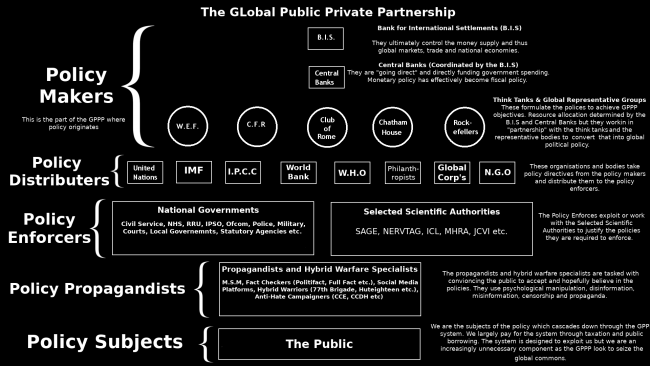
At the same time, Bloomberg partnered with holdings company Equitable, Franch Insurance firm AXA, and banks like Goldman Sachs and HSBC to form the Climate Finance Leadership Initiative (CFLI). The group was formed at the request of the United Nations Secretary-General António Guterres.
Through the CFLI, networks of banks and corporations recommend policy to achieve ‘net-zero emissions.’ One of the solutions implied is obtaining huge swaths of land in North America to build solar and wind farms.
Michael Bloomberg and Bill Gates maintain a close relationship in this broad network of self-described philanthropists.
An analysis by The Land Report found in January that Microsoft co-founder Bill Gates owns 242,000 acres of farmland in the US, making him the largest private-farmland owner in the country.
Gates’ farmland portfolio stretches across 18 states, according to the report. His biggest holdings are in Louisiana (69,071 acres), Arkansas (47,927 acres), and Nebraska (20,588 acres).
According to another report, one of Gates’ investment firms also purchased about 25,000 acres near Phoenix, part of which to be transformed into a suburb with space for 80,000 homes. Gates is not alone, recent viral news reports indicate that corporations Like BlackRock are buying up thousands of homes and entire neighborhoods, further pricing Americans out of the market.
In 2017, the Bill and Melinda Gates Foundation also pledged $300 million to ‘help low-income farmers in Asia and Africa adapt to climate change.’
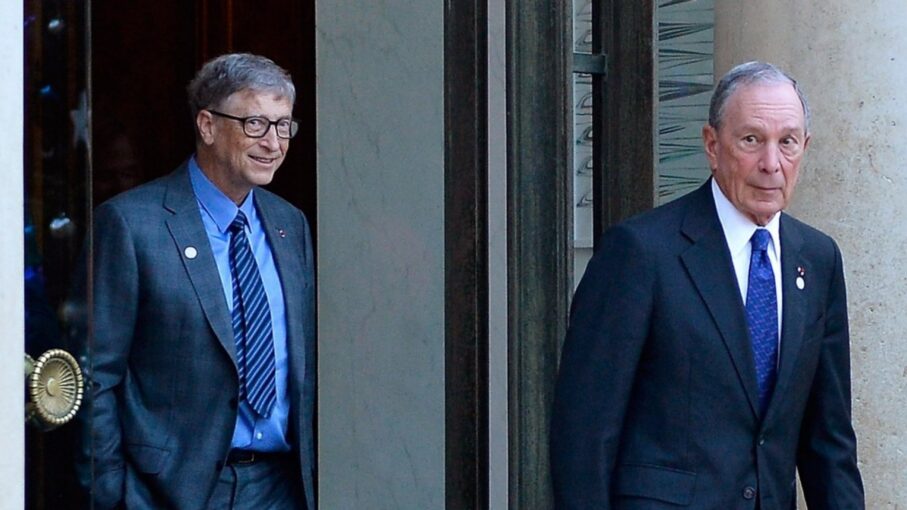
According to an Insider report, in 2011 the Oakland Institute made one of their investigative reports public regarding billionaires buying up land in Africa. The OI stated that the amount of land being purchased in the continent ‘concerned them,’ and that hedge funds and other foreign firms have been acquiring large swathes of African land, often without proper contracts. In the same year, the BBC published a headline titled ‘Hedge Funds Grabbing Land in Africa.’
The OI report concluded that the acquisitions had displaced millions of small farmers and is “creating insecurity in the global food system that could be a much bigger threat than terrorism,” the report said.
The interest these billionaires have in this land abroad is not just the infinite lucrative potential of NACs, it also includes precious metals and minerals.
According to the New York Post, Mineral exploration company KoBold Metals —backed by billionaires including Jeff Bezos and Bill Gates — recently signed a deal to search and mine for critical materials used in electric vehicles.
According to one of their recent reports, KoBold metals calls on networks of billionaires and multinational firms to get behind ‘competing with China’ in the race to develop electric vehicles, in order to aid the Western world in being the first to achieve net-zero emissions.
In their report, KoBold states that more than half of the world’s cobalt reserves are in the Democratic Republic of Congo (DRC), and two-thirds of the world’s production of refined cobalt, a prerequisite for large EV batteries, takes place in China.
The company implies that the Western world needs to find a way to prevent China’s influence over natural resources, including lithium, cobalt, and other precious metals.
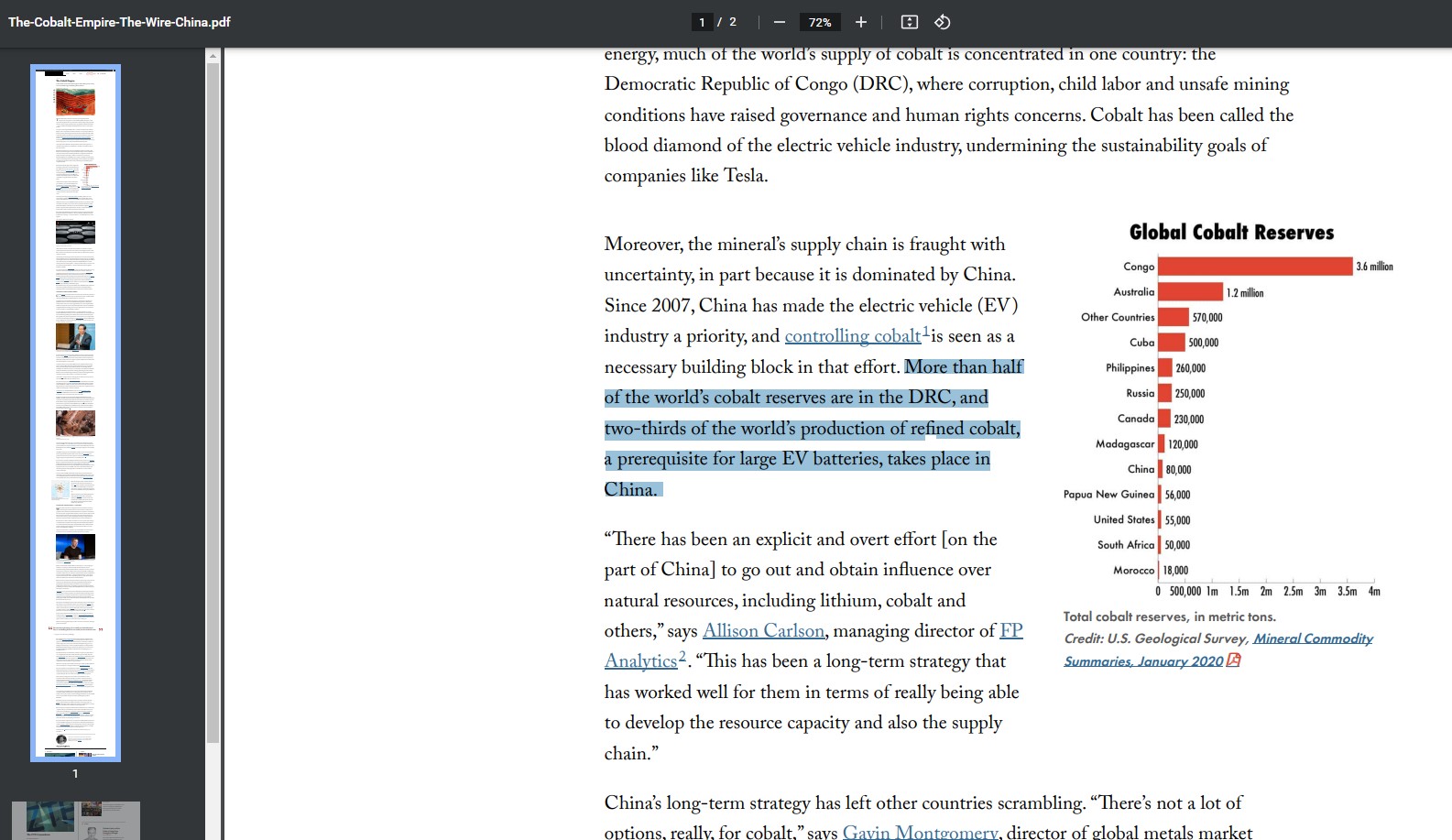
It seems this broad network of philanthropists seeking to achieve net-zero emissions forgot that Cobalt mining is one of the dirtiest processes for the environment. It should come as no surprise that a recent report from Mining.com predicts that CO2 emissions from cobalt production are expected to soar in 2021.
Lockheed Martin is also apparently getting in on the action.
UK Seabed Resources, a subsidiary of Lockheed Martin, in partnership with the UK Department for Business, Energy and Industrial Strategy, currently holds licenses and contracts to explore endless amounts of the Pacific seafloor to extract mineral-rich polymetallic nodules.
Tanzania — one of the countries in Africa on the chopping block for multinational firms — has recently become a target for Nickel production. According to Reuters, the Northwest part of the country has the world’s largest development-ready, high-grade nickel sulfide deposit. Conspiracy theories surrounding the recent death of Tanzanian President John Magufuli are usually centered around his COVID-19 vaccine response, but his regulations against investment firms are a far more plausible conspiracy.
According to a Reuters report, Barrick Gold and Glencore lost a massive nickel project in 2018 when Tanzanian President John Magufuli’s administration revoked their retention license along with the licenses of 10 other investors as part of new mining laws and regulations.
Just months after Magufi’s death, UK-based mining firm Kabanga Nickel Limited signed an agreement with Tanzania to develop the Kabanga nickel project formerly sought by Barrick Gold and Glencore. The company says the recent agreement could help ease electric-vehicle manufacturers’ ‘insatiable demand for nickel.’
In 2017, Tanzania nationalized $29.5 million worth of diamonds it seized from Petra Diamonds Ltd.’s Williamson mine after Tanzanian authorities accused the company of under-declaring mineral exports. In May of 2021, the Guardian reported that the London Stock Exchange-listed company paid a settlement of £4.3m in compensation to dozens of Tanzanians who allegedly suffered serious human rights abuses at mines.
A US-Supported 2019 coup in Bolivia — which many news outlets say led to massacres — came less than a week after former President Juan Morales stopped a multinational firm’s Lithium Deal in the country. Morales resigned as president on 10 November 2019, and he called his removal “forced” and a “coup” but also said that he wanted to stop the bloodshed.
Morales thanked Mexican President Andres Manuel Lopez Obrador, whom he credited with saving his life, after a Mexican government plane flew Morales out of Cochabamba, refueling in Paraguay before arriving in Mexico.
Morales was no saint, however. The former President oversaw a time when Bolivia was one of the largest producers of illicit drugs, had close relationships with drug cartels, and faced multiple rape accusations. In 2020, several photographs of him with a minor came to light and were circulated on social networks. Bolivian authorities said that Morales had been in a relationship with the minor since the age of 14.
The Western world has a well-documented history of bankers, war, and regime change. Many claim the U.S.-backed 2011 military intervention in Libya by NATO forces, and the subsequent death of Libyan leader Muammar Gaddafi was an intentional act by the US government which sought to benefit bankers.
In one email published by WikiLeaks from Sidney Blumenthal to then-Secretary of State Hillary Clinton, Blumenthal complained that Gaddafi’s government had possession of 143 tons of gold and a similar amount in silver, which he sought to use to establish a pan-African currency outside the reach of the central banks.
Just six months after the email, Muammar Gaddafi, the deposed leader of Libya, was captured and killed after the Battle of Sirte.
Source: DailyVeracity.com
Related posts:
Views: 0
 RSS Feed
RSS Feed

















 December 19th, 2021
December 19th, 2021  Awake Goy
Awake Goy  Posted in
Posted in  Tags:
Tags: 
















